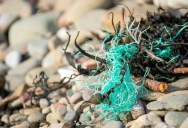Study Links Cancer And Microplastics As People Born in 1990 Are 2 to 3 Times More Likely To Get Cancer Diagnoses Than Those Born In 1955

Just wanted we wanted to hear, another thing we can’t really avoid is causing cancer in young people.
A study published in the journal The Lancet has added “environmental chemicals” to the growing list of risk factors associated with various types of cancers being found in younger and younger people. T
hose environmental chemicals likely include microplastics, which are a relatively recent addition to our environment and environmental concerns but also found just about everywhere including pyramids, the oceans, the blood of newborns, and human and canine testicles.

Using a sample size of over 23 million people diagnosed with 35 types of cancer, as well as more than 7 million subjects who died from 25 types of cancer, the American Cancer Society analyzed data taken between 2000 and 2019.
They discovered that men and women born in 1990 versus people born in 1955 had a two to three times higher rate of cancers of the small intestine, kidneys and pancreas. Women born in 1990 also had a higher rate of getting diagnosed with liver and bile duct cancer.
“[Seventeen] of 34 cancers had an increasing incidence in younger birth cohorts, including nine that previously had declining incidence in older birth cohorts,” the study reads. “These findings add to growing evidence of increased cancer risk in younger generations, highlighting the need to identify and tackle underlying risk factors.”

So how do microplastics factor in and what exactly are they?
Microplastics are plastic particles that are less than five millimeters in length (or about the size of a pencil eraser). The National Ocean Service says:
Microplastics come from a variety of sources, including from larger plastic debris that degrades into smaller and smaller pieces. In addition, microbeads, a type of microplastic, are very tiny pieces of manufactured polyethylene plastic that are added as exfoliants to health and beauty products, such as some cleansers and toothpastes. These tiny particles easily pass through water filtration systems and end up in the ocean and Great Lakes, posing a potential threat to aquatic life.
According to the study, modern risk factors such as obesity, diet and antibiotics likely play a role, with the addition of “environmental chemicals” adding physical stress as well. And things like microplastics, which have been in skin and body products in the 1970s, are certainly a part of that.
Additionally, a study conducted at Tufts University in Massachusetts found that the presence of microplastics can trigger an inflammatory response in human intestinal cells. Such an inflammatory response can lead to diseases like cancer, so it’s not a stretch to associate the two.
It seems like in addition to earlier cancer screenings, we should be paying closer attention to what we are being exposed to and how it’s impacting our health.
If you thought that was interesting, you might like to read a story that reveals Earth’s priciest precious metal isn’t gold or platinum and costs over $10,000 an ounce!

Sign up to get our BEST stories of the week straight to your inbox.




